Dr. Pingali Gopal recounts his travel and stay in and around Kolkata, delves into the history of the city and its landmarks and monuments, and touches the soul of the 'City of Joy' in this very intriguing travelogue.
Kolkata And Sunderbans – Diaries Of A Whirlwind Tour
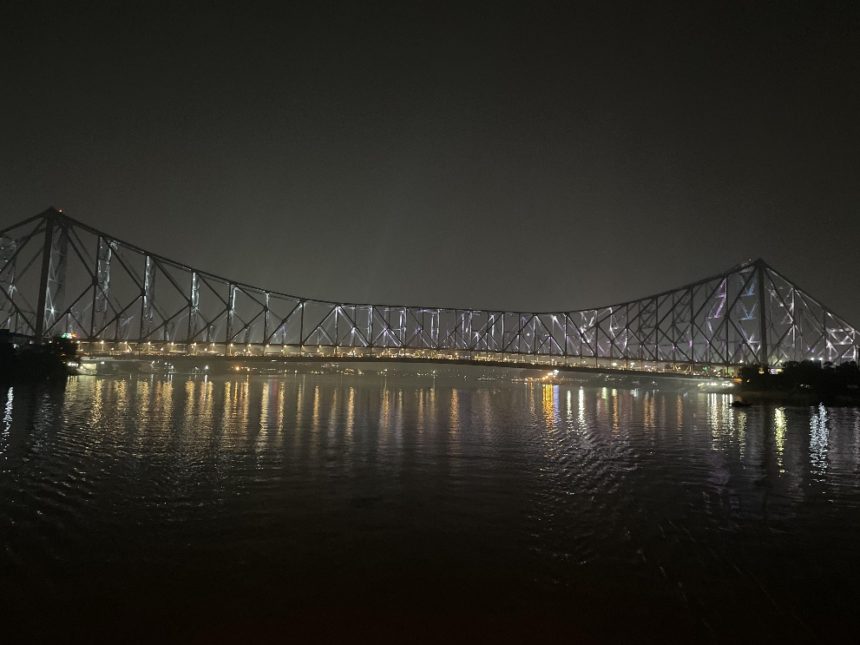
The Motivation
Decades back, when I was just three, my father was in Kolkata for about a year on transfer. There are no memories of the place but the fascination for Kolkata lingered at the back of my mind in the growing years as my elder brother, who had clearer memories, used to describe it in vivid detail. A classic education system, quite effective in deracinating, ensured my detachment from the importance of Bengal in my growing years. It was at the age of 40 years finally when, just by accident, I purchased the entire works of Swami Vivekananda at a grand price of 450 rupees. It was a life-changing movement for me who knew nothing about him beyond the Chicago address. I made a subsequent U-turn on the path opening to the magic of India.
Fifteen years later, I started reading Sri Aurobindo. Today, I am firmly convinced (with due apologies to all Bengalis) that Bengal can rest for eternity even if it does not care to produce anyone else but these two (apart from of course Rabindranath Tagore- I do not desire the entire state coming to kill me). The final ignition was my recent reading of RC Mazumdar’s book on the history of the Indian freedom struggle. Bengal was clearly the epicenter of the freedom movement, amongst many other things, something glossed over by our Delhi-centric and Gandhi-centric narratives.
The Itinerary: Kolkata- Sunderbans
We landed in Kolkata a little late in the afternoon. Our hotel was well placed between the old Howrah Bridge and the new Vidyasagar Bridge overlooking the river Hooghly. It was also quite close to the Esplanade and the other heritage buildings of Kolkata. Being tired, we took a walk around Princep Ghat just underneath the Vidyasagar Bridge followed by a river cruise on the Hooghly starting from Millenium Park. The cruise was a one-and-a-half-hour ride from one bridge to another and it gave us some exquisite views of the city decking up for the upcoming Diwali and Kali celebrations. The jarring note was rather loud live music on the deck which could have been a little softer.
The next day, we travelled after breakfast to Godkhali, the entry point of the Sunderbans. We passed through Port Canning, an interesting place, and had to travel by a jetty from Godkhali to reach our hotel on Gosaba island. It was a four-and-a-half-hour journey and we relaxed in the hotel itself for the evening. The next day, we started after an early breakfast on the Sunderbans boat safari and it was almost 5 pm when we came back. The jetty stopped at various jungle parks. It was a wonderful tour as we immersed ourselves in the flora and fauna of the place. We could spot many species except of course the Royal Bengal Tiger.
It was back to Kolkata the next day and we had half a day to spend after lunch. We chose to have a small ride on the Metro Rail (the first in the country) from Esplanade to Maidan station. We then walked to Victoria Memorial. After spending a couple of hours, we went to see St Paul’s Cathedral and the Birla Planetarium, both close to the Victoria Memorial Building. At the Planetarium, there were shows in English, Bengali, and Hindi. When we reached, there was a Bengali show but we still purchased the tickets for primarily two reasons. First, the next show in English meant a longer wait and second, we wanted to have a taste of the Bengali language. It was indeed a thrill to listen to Bengali but we could get a gist of what was happening. An exploration of the New Market and its street food finished our day on a wonderful note.
The next day started with a gentle walk on the streets of Kolkata to see the Writer’s Building. After breakfast was a day-long tour of Kolkata. We could cover Dakhineshwar temple and the Belur math (the Headquarters of the Ramakrishna Mission) before lunch. After lunch, we shopped for Bengali sarees and then proceeded to visit Birla Temple, Birla Science Museum, Alipore Jail Museum, and finally the most famous Kalighat. It was a tiring day again and we reached our hotel late in the evening.
The next day was Diwali and we flew back to Hyderabad. The decked-up city along the road was indeed a joy to behold. We were lucky as the weather had turned a bit wet in Kolkata owing to a cyclone hitting the Sunderbans region in Bangladesh.
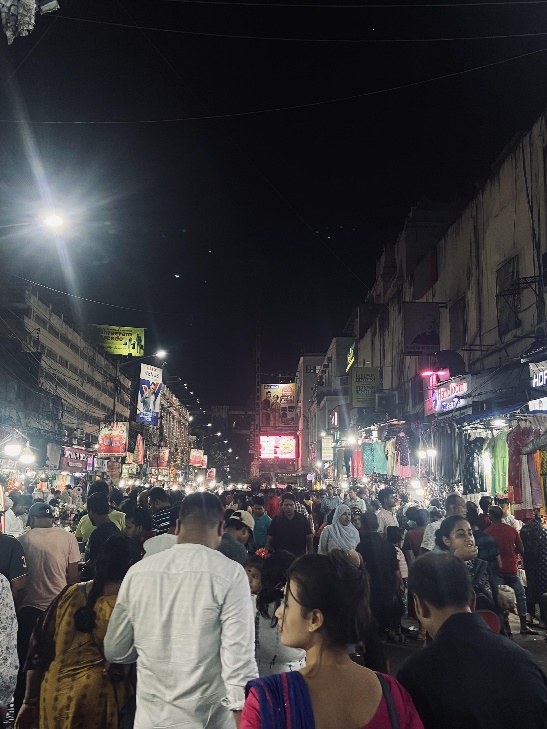
Howrah Bridge
The Howrah Bridge, arguably the most iconic structure of Kolkata, was wonderfully staring at us, all decked up, from across the hotel window. The project to build a bridge across the Hooghly River to connect Kolkata and Howrah started in 1865 and after many delays (which included problems from the world wars), was finally operational in 1943. With a total span of about 2050 feet, it is the sixth largest cantilever bridge in the world but the busiest as the 26,000 tons of steel structure, amazingly without nuts and bolts, carries a daily load of 100,000 vehicles and more than 150,000 pedestrians. My father tells me it used to take hours just to cross the bridge. Interestingly, Tata Steel provided 23000 tons of high-tensile alloy steel called Tiscrom and only 3000 tons came from England as most of the promised steel went for war efforts. It is necessary for any film set in Kolkata to have the Howrah bridge as a backdrop and each one of us has a favourite. Mine was Amar Prem with the soulful Rajesh Khanna crooning Chingaari Koi Bhadke. I was crestfallen on later learning that the shooting of the whole song was in a studio. Damn the clever photography. In recent times, one cannot but fall in love with Kolkata in the Vidya Balan film Kahaani directed by Sujoy Ghosh.
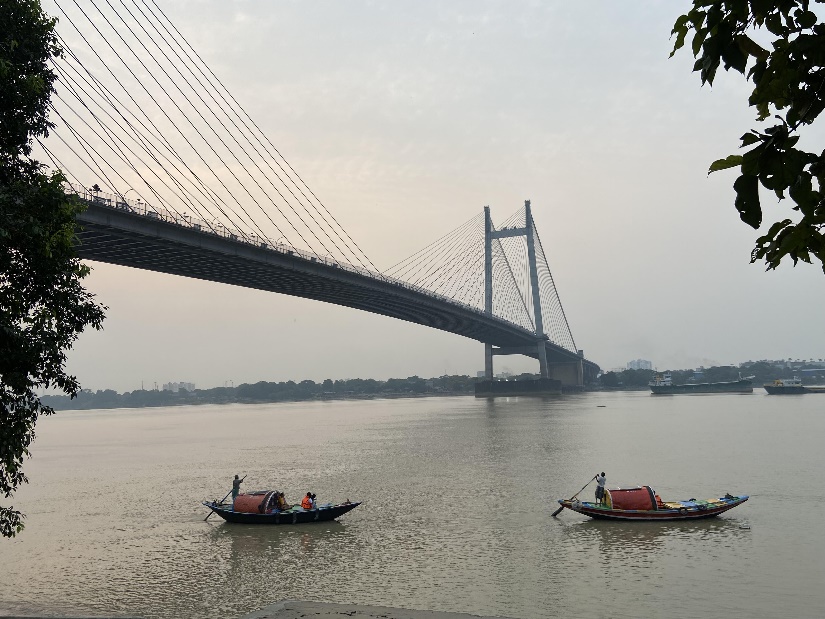
Victoria Memorial
The Victoria Memorial, dedicated to Queen Victoria who died in 1901, is a landmark in Central Kolkata. Though the laying of the foundation stone was in 1906, the construction started in 1910 and was completed in 1921. The structure built of Makarana Marble, costing around 1 crore rupees raised from private contributions, on a call from Curzon who first proposed it, is the largest monument to a monarch anywhere in the world. It links to perhaps the most important part of our independence history.
Lord Curzon, the most hated Viceroy, divided Bengal into an East and West Bengal in 1905, on purported ‘administrative convenience’. The real motive was to curb the growth of national feeling in politically advanced Bengal by driving a wedge between the Hindus and Muslims and destroying their solidarity. This crucial event laid the basis of a true independence struggle when people rose in mass revolt cutting across all classes and professions. From Bengal, nationalism spread rapidly across the country. This included an economic boycott of British goods and a Swadeshi philosophy clearly articulated by Sri Aurobindo.
Finally reversed in 1911 by Lord Hardinge, which also included a shift of the capital to Delhi, it left a huge trail of consequences: a split in the Congress (Moderates and Extremists); the armed revolutionary movement; a foundation for permanent Hindu-Muslim divide; and nationalism on an unprecedented scale.
Risking offense, I found the monument a bit ugly and almost a tribute to the colonials. The sections on Subhash Bose and the other revolutionaries, who require a museum of their own appeared incongruent in the building. It almost feels like a building taken on rent. Without physically pulling it down, the building could have been one of the most emphatic statements in exposing the brutality of colonial rule including the famines inflicted on Bengal. An Indian citizen should come out of the building knowing exactly what the colonialists did to us. It could have been the greatest decolonizing project.

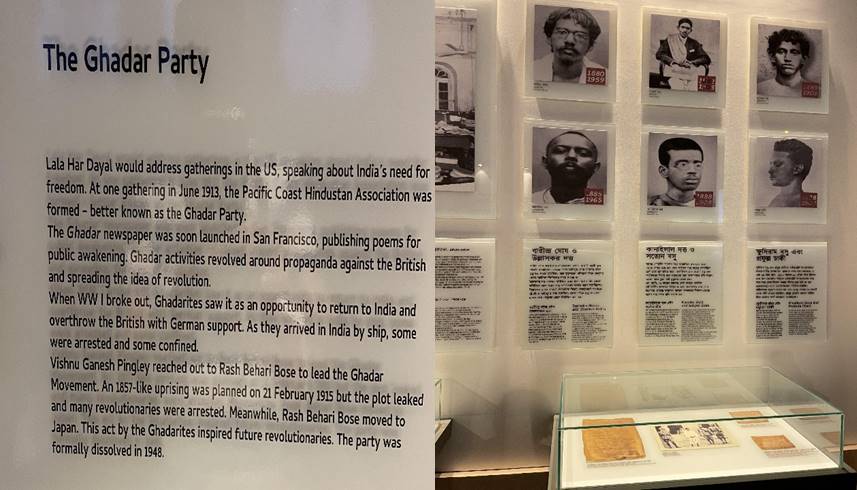 The Forgotten Heroes
The Forgotten Heroes
Writer’s Building
The Writers’ Buildings, the official secretariat building situated in the administrative and business hub of the city, has played a vital role in shaping history as the village of Kalikata became British Calcutta and finally Kolkata. We reached it by a brisk early morning walk. It stands on BBD road named after three revolutionaries who in 1930 shot dead a cruel Inspector General of Police, Simpson, inside the building. Built in 1777, the Writer’s Building is an important witness to the urban history of Kolkata deeply connected with all three ruling entities the city has had: the East India Company (EIC) when it was the principal administrative office for writers (junior clerks); the British India when Calcutta was the capital; and as the secretariat of Bengal state after independence. As one writer mentions, its structure went from plain and functional during the early years of the East India Company, to ornate and overbearing during the British Raj, to somewhat messy and overwhelmed as a newly independent India found its feet. The Writer’s Building has seen much colourful political activity.
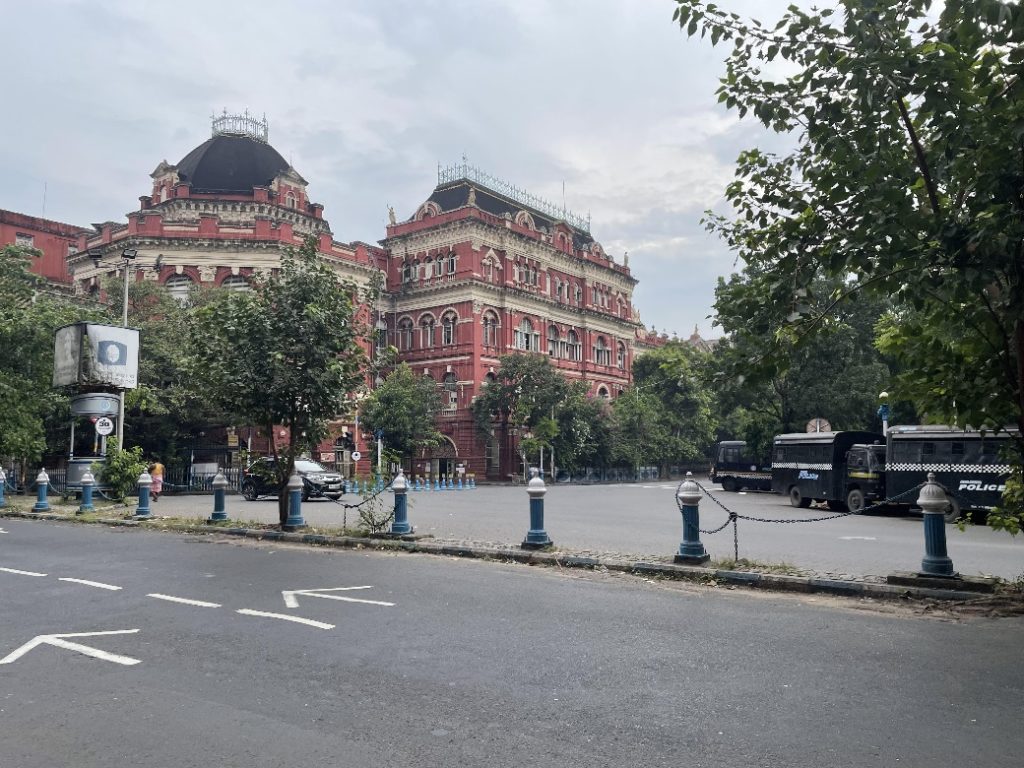
Alipore Jail Museum
Clearing potential confusion, there are two Alipore jails located in the same vicinity. The old original Alipore jail, now the Presidency jail, dated to the late eighteenth century housed many revolutionaries including those later deported to the Cellular jail in the Andamans. Sri Aurobindo had an intense spiritual transformation in the one year he spent here as an accused in the Alipore Bomb Case.
The new Alipore jail built in the early part of the 20th century is now a museum dedicated to our freedom fighters. The museum truly is a grim reminder of the brutalities inflicted by the colonials and a solid tribute to the many forgotten revolutionaries whom we owe plenty. The old jail saw the executions of Kanailal Dutta, Satyendra Nath Bose, Charu Charan Bose, Birendra Nath Dutta Gupta, and Gopi Mohan Saha; and the new one of Anantahari Mitra, Promod Ranjan Chowdhury, Dinesh Gupta, Ramkrishna Biswas, and Dinesh Mazumdar. Many famous personalities such as Barin Ghosh, Subhas Bose, Nazrul Islam, Sarat Bose, Nehru, and Chittaranjan Das (the prominent lawyer who fought for Sri Aurobindo and won the case) were inmates of both the Alipore jails.
The revolutionary movement, centered in Bengal and later spreading to other parts of the country, became a potent force in Indian politics initiated during the partition of Bengal in 1905. The two movements — one violent and another non-violent — went on side by side. ‘Direct Action’ to achieve complete independence and to remove the lethargy in political activity were the chief objects of the revolutionaries. Sadly, very few are aware of the great Bengal revolutionaries Surya Sen and Jatin Das (who died after a 63-day hunger strike).
The gallows site was an emotional site and when I saw the rooms on the first floor where the prisoners could see the hangings clearly from their windows, I cried.
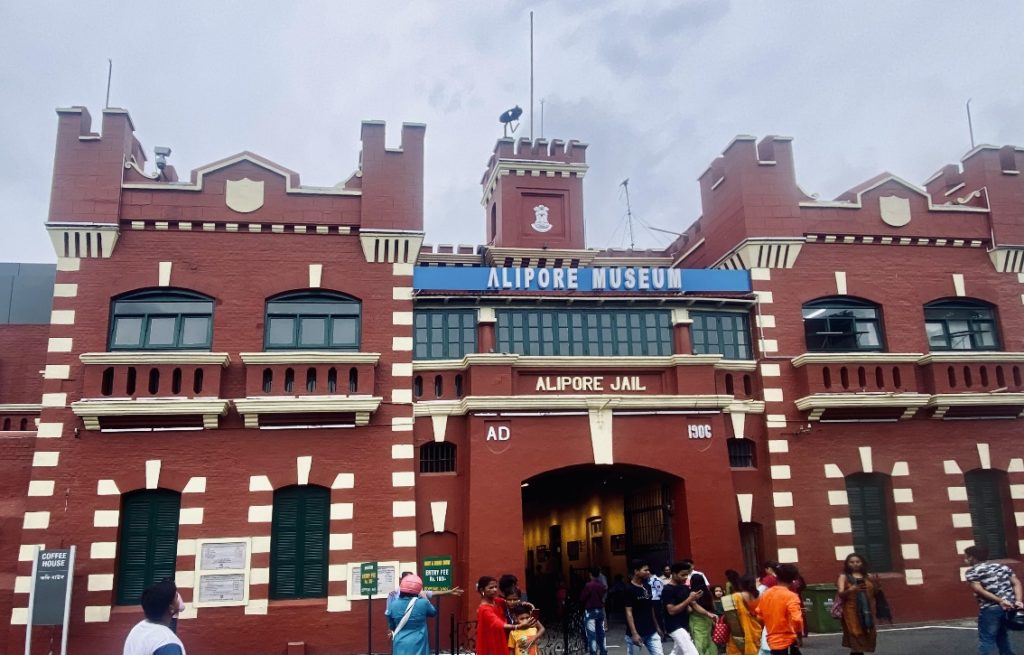
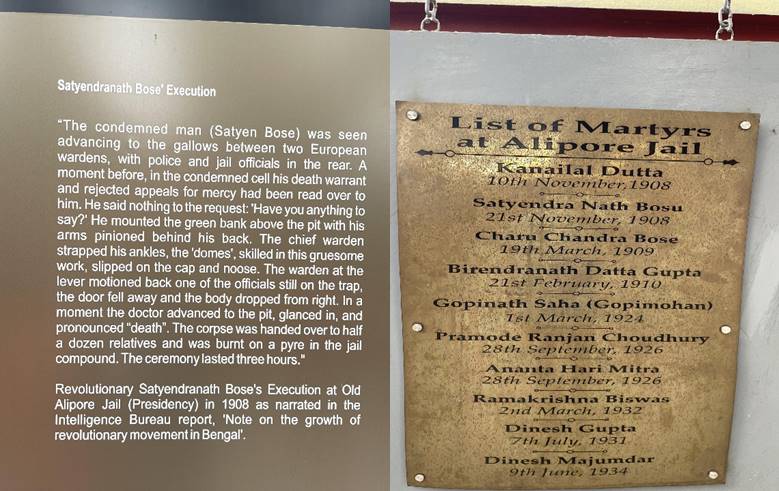
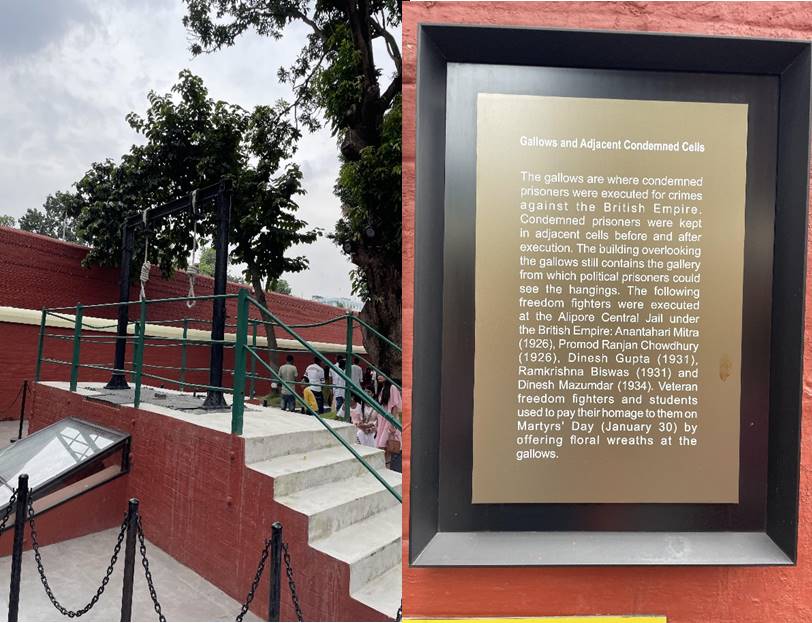
Birlas and Kolkata
Kolkata links intricately to the Birla success story. GD Birla, a sixth-generation Marwari businessman originally from Pilani (Rajasthan), moved to Calcutta and started a jute mill in 1911. The incredible diversification of the successive generations includes cotton, sugar, publications, cars, silk manufacturing, aluminium, cement, tea, shipping, paper, fertilisers, non-ferrous metals, viscose filament yarn, viscose staple fiber, chemicals, branded apparel, carbon black, sponge iron, agricultural businesses, telecommunications, IT, and financial services! At least 30 of the 250 largest private sector companies come under the Birla fold. Their strict moral codes inhibit them from entering the hotel industry requiring non-vegetarian food and leather despite, ironically, earlier generations making their fortunes through the opium trade. The East India Company and later colonial officials profited extensively from a monopolised opium trade from India to China. In Bombay, where the company had lesser influence, the Parsis and Marwaris (like the grandfather of G. D. Birla) made a fortune through the opium trade with China.
In the dreaded licensing system period, beginning with the Industrial Licensing Act of 1951, involving huge delays, extensive corruption, and bureaucratic hurdles, the Birlas made remarkable growth; and no wonder many charges of irregularities cropped up against them. A successful strategy was to render invisible the umbilical cord between many units to the parent group so that they could then deny that they were Birla companies. Withstanding many enquiry commissions on irregularities, monopoly trade, and pollution issues, the Birlas remain remarkably dedicated to Hindu activism and many philanthropic activities involving cow protection, education, engineering colleges, temples, museums, planetariums, libraries, fundamental research, hospitals, schools, and so on. Ghanshyam Das played an important role in the independence movement and was close to M. K. Gandhi. The Birlas were once radical social reformers in the Marwari community in espousal of causes like abolishing the veil, ending early marriage, avoiding dowry, educating women, and dispensing of elaborate and costly rituals.
We could visit only a few of the Birla related monuments in the short time available to us. The Birla Planetarium is the largest in Asia and the second largest in the world. The Birla Industrial and Technological Museum, built in 1959 from generous donations from G. D. Birla kickstarted a nationwide network of science museums and science centres under the National Council of Science Museums (NCSM). The awe-inspiring Birla Mandir, quite close to the museum, made of white marble and cream-coloured sandstone, is one of the later additions to the chain of Birla temples in the country.

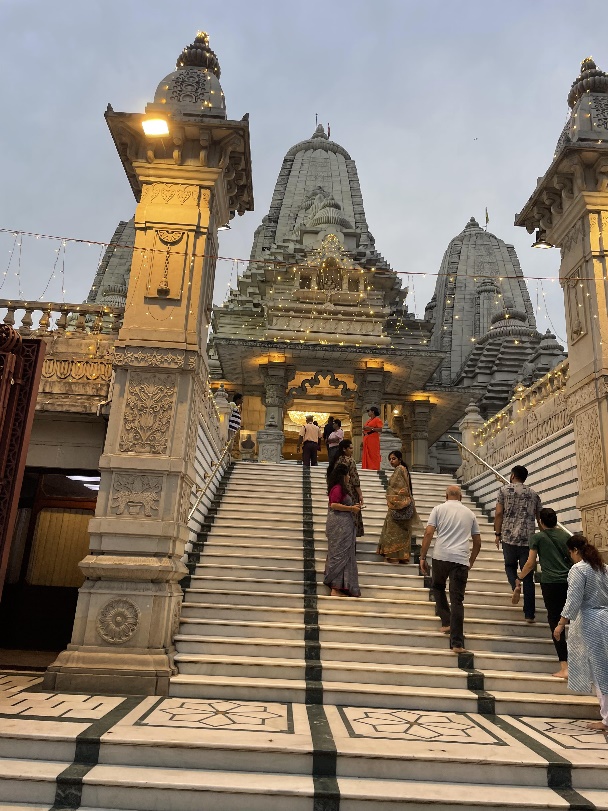
Belur math
Belur Math is a sprawling campus and headquarters of the Ramakrishna Math and Ramakrishna Mission. Founded by Swami Vivekananda, it is on the west bank of the Hooghly River. An early morning half-hour drive across Howrah Bridge brought us to this wonderful place. The campus includes temples and the main monastery of the Ramakrishna Order amongst many others. The wonderful museum richly depicts the lives of Sri Ramakrishna, Sarada Devi, and Swami Vivekananda. Sri Ramakrishna is a great mystic and saint of modern India in the Advaitic tradition. Schiffman says, “He is vast and infinite who accepts everything, every belief, and every practice. He is indeed ‘a Prophet for the new age.’”
What can describe Swami Vivekananda, who in his brief life of 39 years, could achieve what a combined effort of many, each living for hundred years, can never even dream of? Makarand Paranjape opens his book on Swami Vivekananda by saying that he was the greatest spiritual leader, institution builder, philosopher, scholar, orator, teacher, poet, and undoubtedly one of the most important makers of modern India. The great Swami reclaimed Hinduism (Sanatana Dharma) under severe onslaught from the colonials and missionaries and presented it as the greatest and only hope for all humanity. He perhaps is single-handedly responsible for the cultural and spiritual rejuvenation of India at the peak of colonial subjugation. He inspired many future intellectuals and independence seekers. The Ramakrishna Mission works silently and many may not be aware that it is the largest Charity mission in the country doing extraordinary work.
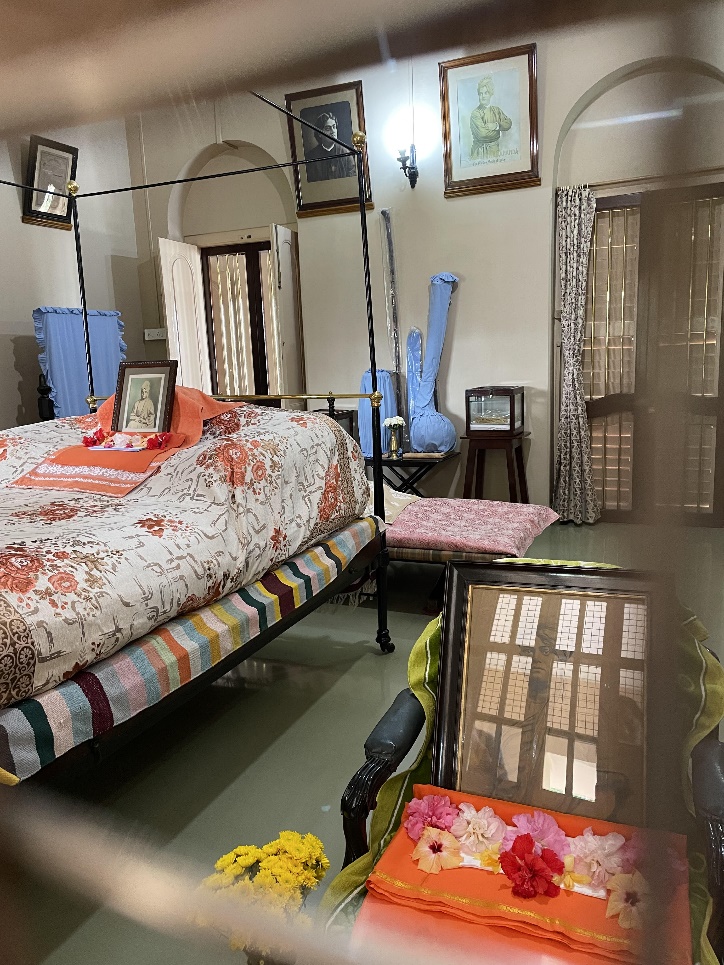
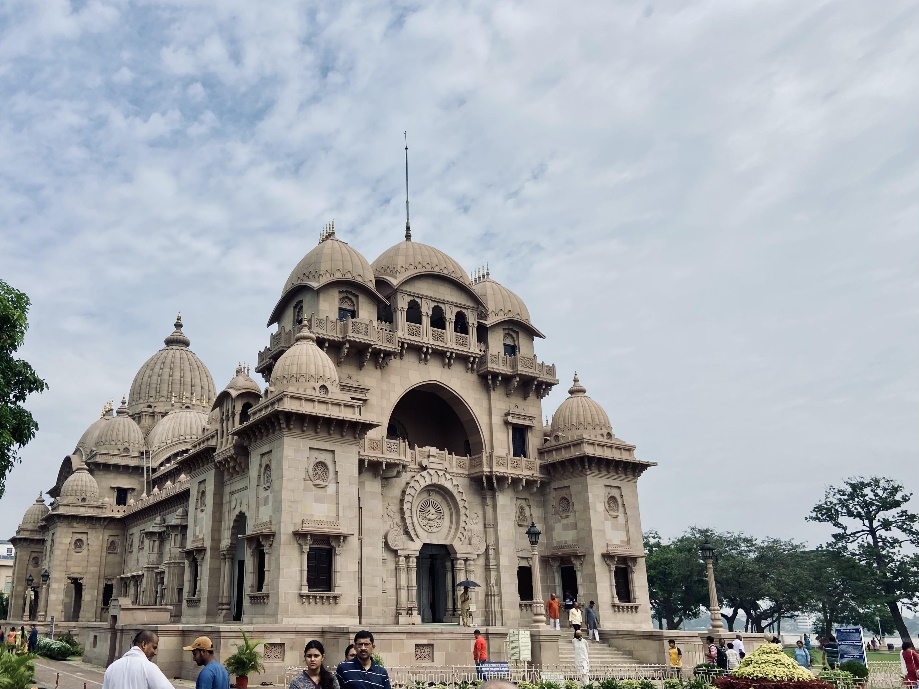
Kali, The Mother
What the Brahman is to the universe- transcendent and immanent, Mother Kali is to Bengal and Kolkata. Being Diwali time, Kali pandals were vibrantly decorating the city. Her majestic presence is most popular at the Kalighat Kali Temple, where the big toe of Devi Sati fell according to tradition. One of the 51 Shakti Peethas defining the sacred geography of Bharatvarsha, it is easily the most iconic place in Kolkata. Interestingly, the 51 Shakti Peethas link to the 51 alphabets in Sanskrit in the Shakti traditions, and each in turn associates with a specific mantra addressing the Devis.
The Dakshineshwar temple, built in 1885 and associated with Sri Ramakrishna, faces the Belur Math on the other side of the Hooghly River. Apart from the main temple of Mother Kali as Bhavatarini, it has twelve Shiva temples and one of Radha-Krishna. There is a shrine dedicated to the builder of this wonderful temple, Rani Rashmoni. Sri Ramakrishna, as a temple priest, and Ma Sarada Devi spent many years here.
Each of the idol’s four arms has a precise esoteric meaning. The sword on the upper left arm aims to remove the demonic elements (lust, greed, pride, anger) in the path of spiritual development. The severed head on the lower left hand represents the defeated demon of egoism. The right upper hand in the Abhaya mudra signifies divine protection and the right lower hand offers boons and finally liberation. Thus, as an embodiment of Universal energy (or Shakti), She is Time in an eternal play of destruction and creation. A supine Shiva represents His vibrationless state beyond creation.
The Kali image is a source of intense misrepresentation across time and place. Kali smoking or holding an LGBT flag and ‘scholars’ eroticizing Hindu deities or using Freudian lenses to evaluate Ramakrishna are tremendous intellectual acts of violence on a culture that fortunately has no concept of blasphemy and unfortunately has silence as a response because of an inability to formulate one. Such recurring descriptions of Tantrik traditions as an infringement of moralities in Western media, the film industry, or academia trivialise, distort, and deny the experience of another culture towards its saints and gods. Sadly, our own intellectuals internalise these descriptions and attack India. Many highly sexual and perverse interpretations of Goddess Kali are completely alien to the Hindu worldview and iconography. The iconography of Kali represents many ideas in the Tantrik traditions but the underlying theme is liberation or Moksha.
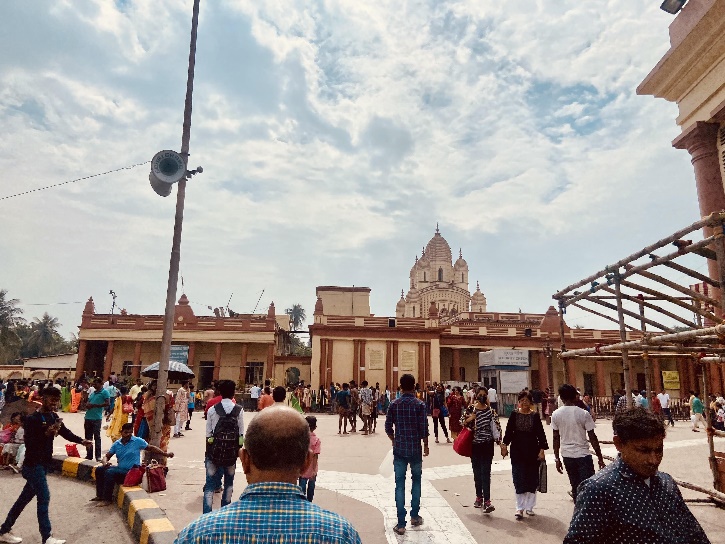
The Pandas of Kalighat
The only jarring and disturbing part of the trip was some priests at Kalighat threatening, scaring, and fleecing the devotees from across the country. It would be a great idea for the government to urgently streamline the system. The goons and brokers selling divinity are a blot on one of the most important places in the city, state, and country. The four-fold varna vyavastha forms the bedrock of Indian civilisation preventing it from disintegration through persistent attacks for centuries. But no varna has such a forceful representation as the few priests manning such places of pilgrimage. This minuscule corrupted sacerdotal community has been the target of colonials, missionaries, and intellectuals (both Indian and western) to attack Sanatana Dharma. Presenting them as the only face of Brahmins and Sanatana Dharma has been a great misrepresentation of Indian culture, either by intent or ignorance.
Sri Aurobindo significantly says[1], ‘When it is spoken of as a Brahminical civilisation, the phrase cannot truly imply any domination of sacerdotalism, though in some lower aspects of the culture the sacerdotal mind has been only too prominent; for the priest as such has had no hand in shaping the great lines of the culture. But it is true that its main motives have been shaped by philosophic thinkers and religious minds, not by any means all of them of Brahmin birth. The fact that a class has been developed whose business was to preserve the spiritual traditions, knowledge, and sacred law of the race, – for this and not a mere priest trade was the proper occupation of the Brahmin, – and that this class could for thousands of years maintain in the greatest part, but not monopolise, the keeping of the national mind and conscience, and the direction of social principles, forms, and manners, is only a characteristic indication.’
As my wife and daughter held me back when I lost my temper at the temple premises, I remembered Sri Aurobindo and assuaged myself that these do not represent our Dharma just as a few streets of Kolkata do not represent either Kolkata, Bengal, or India.
Mangrove Forests and The Sunderbans
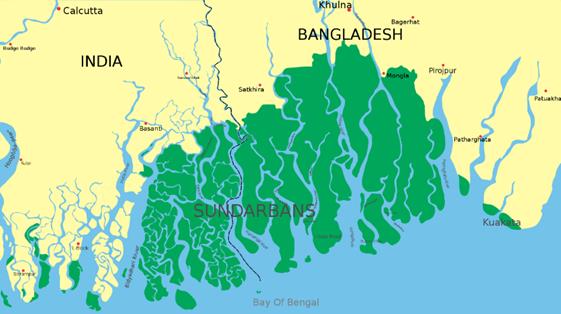
The drive from Kolkata to Godkhali (the entry point for Sunderbans) was about three hours. We passed an interesting place called Canning (the colonial names still exist) on the way. Lord Canning tried to develop a new port here after the first war of independence (1857) as Calcutta was choking. This, despite warnings from an English captain, Piddington (who incidentally coined the term cyclone), of impending cyclonic storms. A devastating cyclone in 1867 destroyed the port beyond repair and the project collapsed. An interesting report in 1868 revealed enormous financial and administrative irregularities in the operation of the new port. So much for British administrative efficiency.
A ferry took us across to our resort on the opposite island Gosaba. The one-hour journey by boat to our place of stay gave the initial exposure to the magic of the Sunderban mangrove forests – the largest in the world, in the delta of Ganga and Brahmaputra rivers. 40% of the forest is in India and 60% in Bangladesh. The Sunderbans forest, encompassing a total area of about 9500 square kilometres, has about 85 different Mangrove species providing habitat to 290 bird, 120 fish, 42 mammal (including the famous Royal Bengal Tiger), 35 reptile, and eight amphibian species. A UNESCO World Heritage Site for its remarkable biodiversity, it is a lesser-known place for eco-tourism carrying a huge potential. People inhabit only 54 of its 102 islands formed by the innumerable water bodies running through the forests.
Mangroves grow typically in salty coastal areas and their special exposed roots ensure survival in low-oxygen marshy areas exposed to many tides. Typically short, the mangroves with their intricate and complex root systems play a huge role in absorbing carbon (more efficient that an equivalent area of regular forest), oxygen generation, holding soil, allowing a huge diversity of marine life, and shielding against hurricanes, storm surges and landslides. This apart from all the other human supporting functions of forests and water bodies.
The Royal Bengal Tiger, a protected species, and exclusive to Sunderbans, have two special qualities: they are excellent swimmers and they relish human meat. Stories of tiger sightings and their attacks on humans filled our brief time at the Sunderbans. Apparently, a thousand people have died over four decades by tiger attacks. By strict measures, the causalities have come down in recent times. One must be extremely lucky to sight a tiger but that should not depress as there are other things in plenty to see and enjoy. So deep is the fear and respect that the locals, interestingly both Hindus and Muslims, venturing into the forests pray to Banabibi, the local deity who protects them from tiger attacks.
The one-day boat safari went through many safari parks having watch-towers, specially constructed sweet-water ponds to attract the tigers, and breeding ponds for crocodiles and turtles. At Dobanki park, there was a beautiful canopy walk and we could sight deer in all their glory. We also sighted monitor lizards, turtles, and many birds. A binocular is the handiest thing in this ride, especially for the birds. One of the most beautiful parts of the safari was Panchmukhi– a confluence point of five rivers- Durgaduyani, Icchamati, Shukna, Gumor, and Banabibidharani. No words.
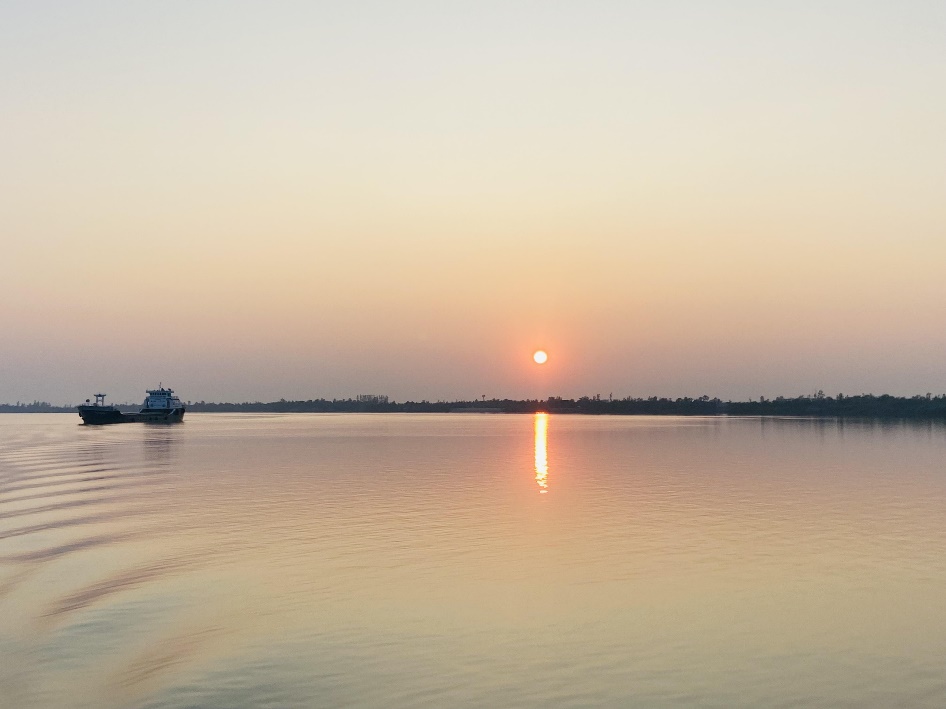
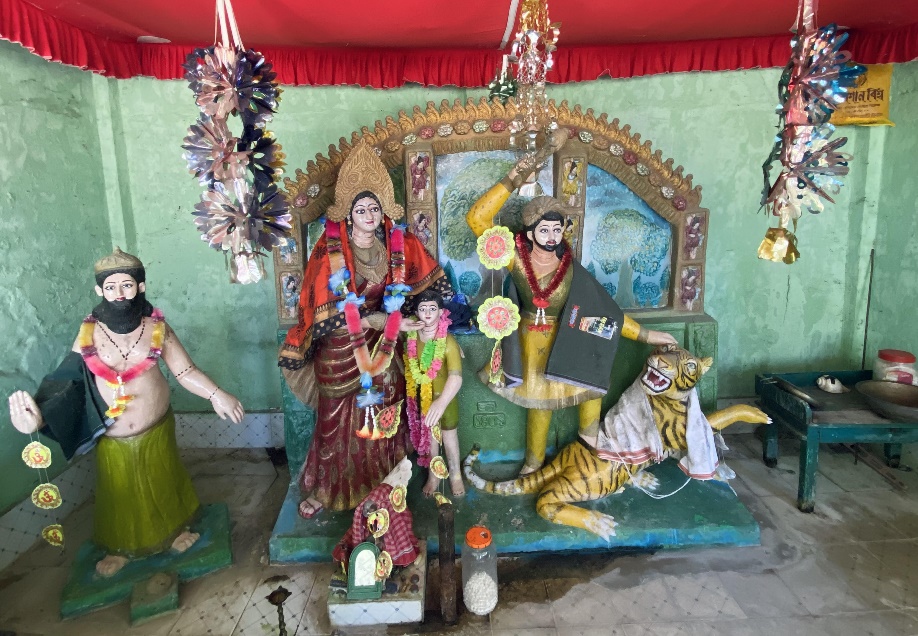
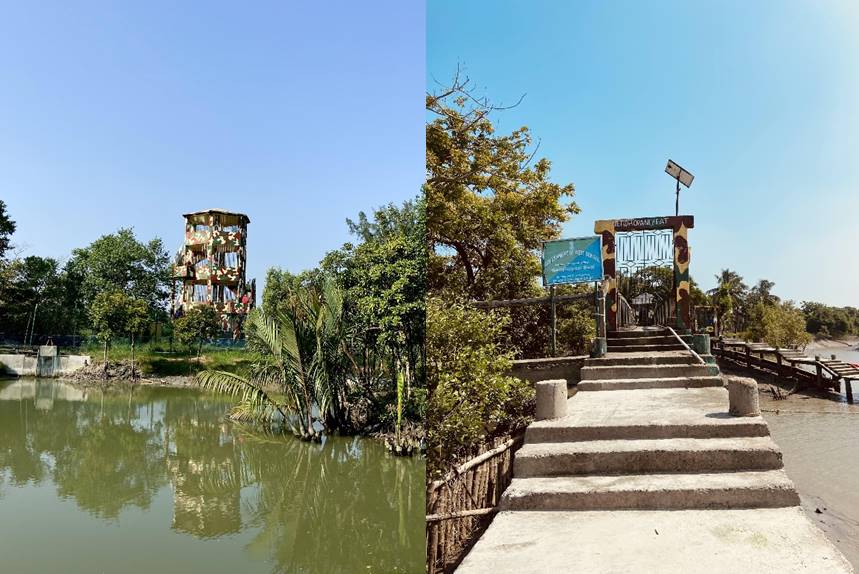
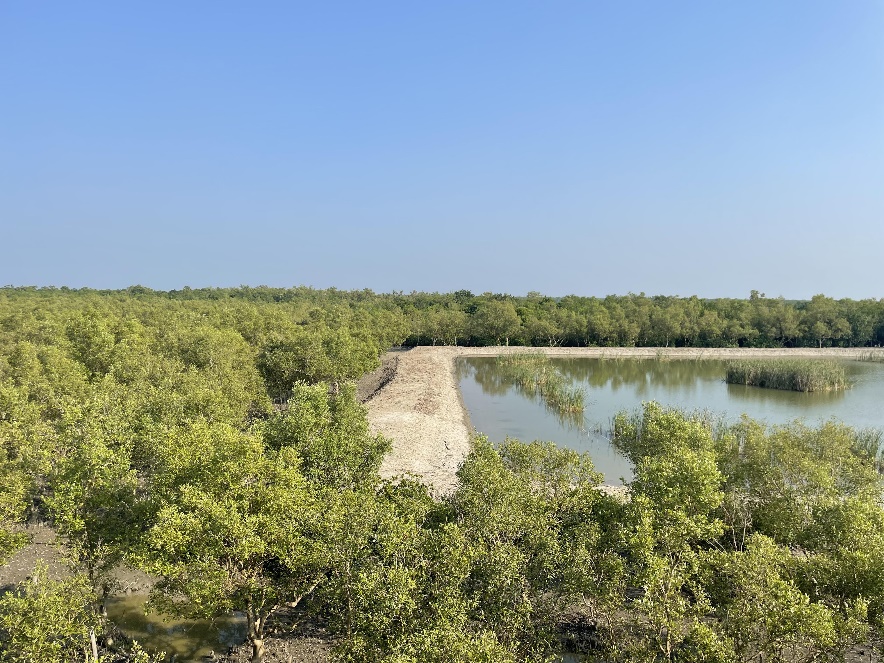
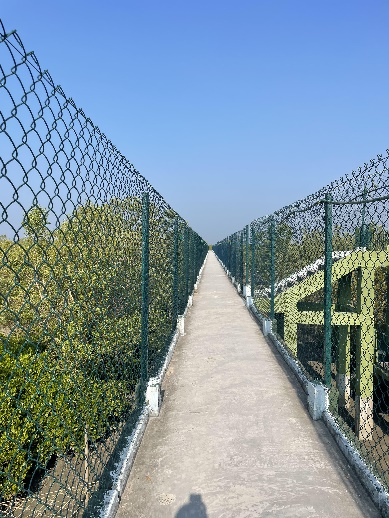
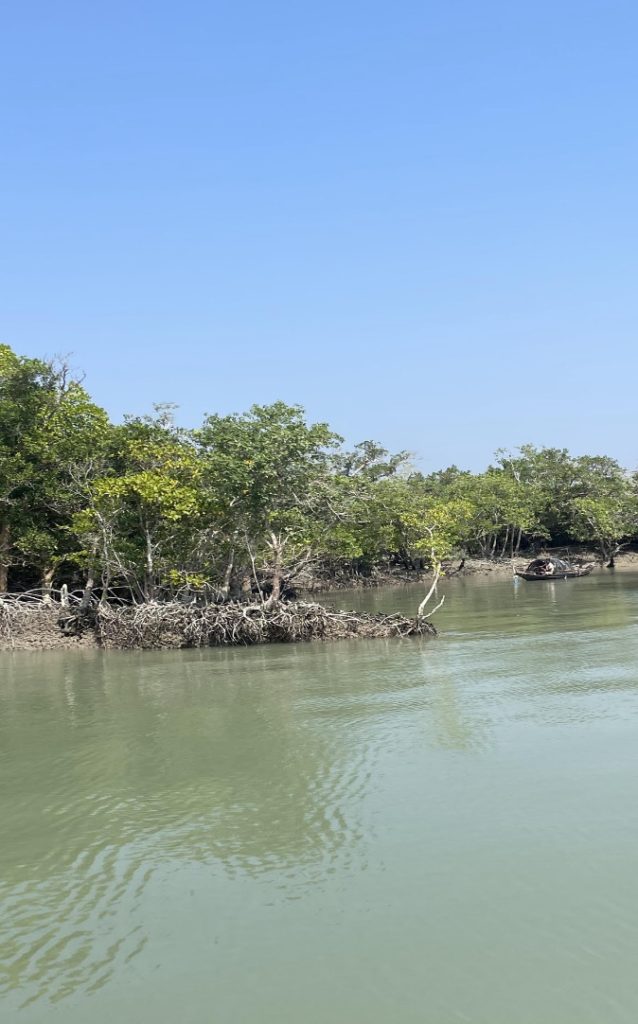
Mother Teresa and the City of Joy
Even after the capital shifted to Delhi in 1911, Kolkata was the wealthiest city between Rome and Tokyo in the 1930s. A ‘City of Palaces’ in popular descriptions became a ‘City of Slums’ thanks to some incredible distortions by a worldwide journalistic cabal mainly in the name of Mother Teresa. Racist authors like Rudyard Kipling in the previous era and authors like Dominique Lapierre[2] in recent times managed to give the most terrible reputation to Kolkata as a place of huge slums, unmitigated poverty, extreme hunger, and depraving prostitution.
The global media projected Kolkata as the most populous city in the world when, trailing behind Delhi and Mumbai, it was not even in the top 10. Kolkata is also not the city with the maximum number of slums. Mumbai has a greater number of slums and both Delhi and Chennai have an equivalent population living in the slums as Kolkata (about 30%). The propaganda machinery declares Kolkata as a perpetually hungry place when, in fact, West Bengal is one of the most fertile deltas in the world producing enormous rice, vegetables, and fish.
As Aroup Chatterjee informs in his book, it is the misfortune of Kolkata that the single most achievement of Mother Teresa over a quarter of a century was to bring in tourists, celebrities, and social workers looking only for poverty and deprivation. He exposes Mother Teresa in his explosive book as a charlatan concerned more about conversions rather than social work and how both her Nobel peace prize and sainthood were frauds perpetrated by careful manipulations of influential journalists. Much of the unaccounted money which made her Mission rich came from brutal dictators and despots.
Independence Movement and Legends of Bengal
Our whitewashed histories ensure that we know more about European treaties and Delhi rulers rather than a region like Bengal which records one of the most difficult and complex histories – an overwhelming mix of religion, politics, culture, language, literature, and colonialism. The first period (1342-1757) of modern Bengal history started with the violent conquests of Bakhtiyar Khalji over the Sena dynasty. The Sultanate of Bengal, the Mughal Empire, and the Nawabs of Murshidabad followed in succession until 1757 (The Battle of Plassey).
The British started as small trading colonies of which Calcutta was an important center to start off the wars to wrest power for itself. The British apparently fought 111 wars to capture India according to one count. The second period (1757-1857) was the East India Company rule. In 1857, after the first war of independence, the Crown replaced the Company to rule India. In the third period (1857- 1905), colonial rule destroyed a most prosperous region. In 1905, Lord Curzon split the Bengal Presidency. The reunion happened in 1911 but Delhi became the new capital of India.
The most amazing aspect of British rule must be the Bengal famines despite having the most fertile delta in the world. Starting from 1770, there were seven great famines mostly due to faulty administration. The Nazi driven holocaust killed 6 million Jews across Europe and Africa from 1933 to 1945. But just one famine of 1943-44 took away 3 million lives due to the single reason of Winston Churchill and his war policies. Churchill stands as a war criminal on the same footing as Hitler and yet we have exonerated the former. The Communists had a shameful role to play during the 1943 famine and the Quit India movement too when they sided with the British government authorities since their friend and master- Russia, became a friend of the English to fight Germany in the second world war.
Gandhi’s active life was between 1915 (when he came back from South Africa) to 1942 with the Quit India movement. Few are aware that before 1915, a decade of intense freedom struggle (the Swadeshi movement) with a strong epicentre in Bengal was already in place involving many legendary freedom fighters, revolutionaries, and intellectuals like Sri Aurobindo. It stoked nationalism across the country. As one author says, ‘It (Swadeshi) laid down a method of agitation which Gandhi took up and continued with three or four startling additions, khaddar, Hinduism, Satyagraha – getting beaten with joy, Khilafat, Harijan, etc.’
An undue credit goes to Gandhi, especially the 1942 Quit India Movement, for carrying out a glorious revolution that led us to freedom. In fact, the movement collapsed in two months’ time and India had to wait for five more years before it achieved freedom under very different circumstances. The outbreaks after the ‘Do or Die’ call in 1942 reveal the hand of the revolutionary movement which was always an active political force. Gandhi himself publicly disowned responsibility for the whole movement. Unfortunately, both the revolutionary movement and the non-violent Satyagraha ended, almost simultaneously, without achieving freedom. The most curious facet of Gandhi and later post-independent historians has been the failure to acknowledge the role of the brave heart revolutionaries. There was resentment when Gandhi refused to use his influence to stay the executions of Bhagat Singh, Raj Guru, and Sukh Dev, convicted in the Lahore Conspiracy Case.
There were other factors from 1942 to 1947 that finally gave us independence: the economic hardships of England post-war; the friendlier labour government of Clement Atlee; American pressure; the naval mutinies of Bombay; and most importantly, Subhash Chandra Bose and his INA. The INA trials in Delhi form a crucial part in evoking nationalism like never which scared the British authorities even more. Of course, Dominique Lapierre[3] would want us to believe that Lord Mountbatten gave India its independence.
Despite all the troubles, it is amazing how Bengal produced the greatest of figures in practically all fields and quite disproportionate to its size. There must be something in the waters of the Ganga, rice, fish, and rosogolla. A huge number of intellectuals, writers, scientists, artists, poets, singers, sportspersons, and reformers across a couple of centuries whose names most of the country knows intimately are responsible for the spiritual, cultural, and literary renaissance of India. Arguably, no other state in India has been more responsible than Bengal to make the world a better place.
Bidding Adieu
We promised ourselves a longer trip as the wonderful whirlwind tour of Kolkata and Sunderbans ended. Hopefully, we will come back another day to explore fully. But so much to see and so little time. I did miss going to a place called Naktal for lack of time which was purely for emotional reasons. As our family’s favourite personal Kolkata story goes, when I was just a few years old, my geophysicist father in the late 1960s, freshly transferred to Kolkata, was looking desperately for a house to rent for his family of four. He happened to meet another desperate man, a rich businessman, looking for tenants into his huge house. My father shook his head in disbelief as he was earning five peanuts from the government and could not pay more than one peanut. The owner agreed to half a peanut and we moved into the ground floor of a luxurious duplex bungalow with one large trunk containing the possessions of all four of us. Apparently, the Congress party was trying to occupy the house for its office purposes and the owner was keen to rent it to the first person he met looking for a house. So, at just 150 rupees a month, we were apparently neighbours to the famous actor Biswajeet (our closest brush with a celebrity). I checked my Google; he has apparently shifted to Mumbai and my driver made it clear that an ex-house of Biswajeet is no landmark in Kolkata.
How does a state with so much Dharma and Kali pervading its consciousness allow the atheist Communists for such a long time? The Congress government at the Centre debilitated West Bengal’s economy between 1947 and 1966, when it governed both the state and the Centre. The gross industrial output dropped and in terms of per capita income, Bengal fell from the 1st to the 8th position. The Left Communist parties ruled from 1977 to 2011 after slowly wresting power from the Congress but they were no better. The drain of resources, the heavy immigration from other states and Bangladesh, and the uninterrupted anti-industrial policies made Bengal a state of continuous injustice since the times of perhaps Islamic invasions. But fantastically, apart from a general political failure, it has stayed bright in practically every other field holding a beacon to the rest of the country. May God bless Bengal and Bengalis forever.
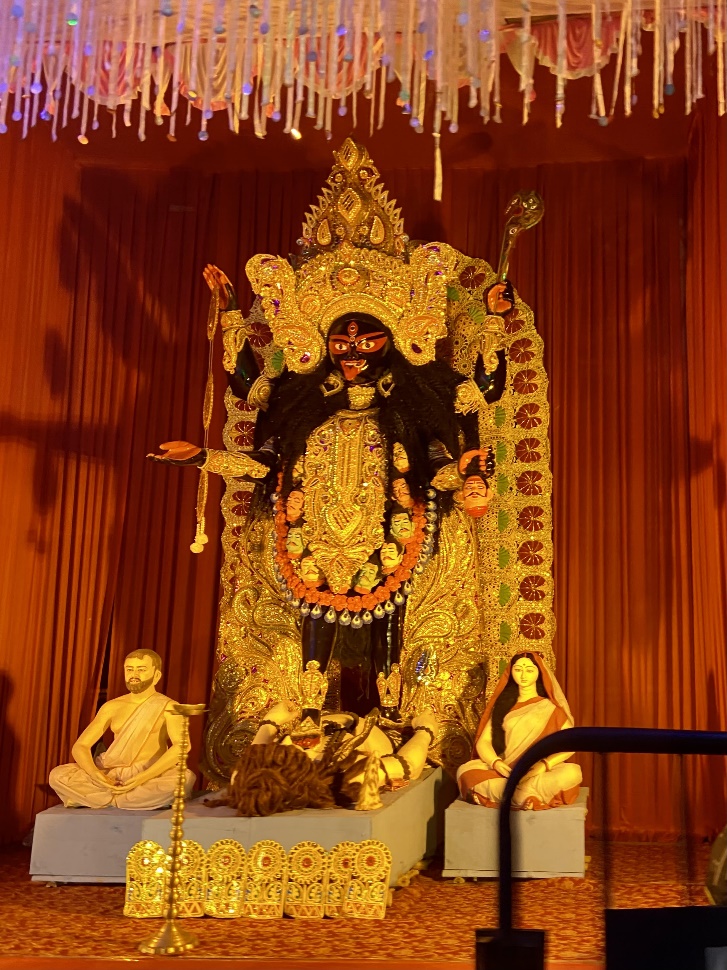
References and Further Reading:
- A Rationalistic Critique on Indian Culture; (in The Incarnate Word, Volume 14) – The Complete Works of Aurobindo Ghose
- The City of Joy – Dominique Lapierre
- Freedom at Midnight – Dominique Lapierre and Larry Collins
- The History and Culture of the Indian People: Volume 11: Struggle for Freedom – R.C. Majumdar
- Mother Teresa: The Untold Story – Aroup Chatterjee
- https://double-dolphin.blogspot.com/2019/01/forgotten-history-port-canning-disaster.html
- https://www.indiatoday.in/magazine/special-report/story/19830715-the-birlas-representing-a-fascinating-saga-in-indian-enterprise-770813-2013-07-20
- Swami Vivekananda: Hinduism and India’s Road to Modernity – Makarand R Paranjape
- Sri Ramakrishna: A Prophet for the New Age – Richard Schiffman
- Becoming Hindu and Muslims: Reading the Cultural Encounter in Bengal 1342-1905 – Saumya Dey
- Churchill’s Secret War: The British Empire and the Ravaging of India during World War II – Madhusree Mukerjee

Leave a Reply